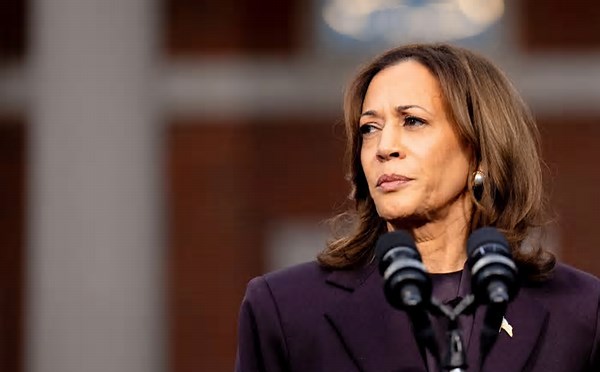Because women leaders aren’t asking for favours — they’re asking for fairness.
Kamala Harris is many things — Vice President, former senator, attorney general, and a woman who’s navigated the sharpest corners of American politics. But more than anything, she’s become a case study in how gender bias continues to shape, limit, and distort what leadership looks like in the public eye.
And she’s far from alone.
For every woman who steps into political leadership, the stakes rise — not just in policy, but in perception. While men are often assumed competent until proven otherwise, women face the opposite: they must prove, defend, and re-prove their qualifications at every step.
This is not about individual resilience. It’s about systemic expectations. And it’s time we stop pretending the playing field is equal.
The Persistent Weight of Gender Bias
Despite decades of progress, the underlying narrative persists: men make better leaders. It’s a belief still held by a startling proportion of the public — and it plays out in everything from voting patterns to media framing.
When a man runs for office, he’s measured on policy.
When a woman runs, she’s measured on presentation.
Her voice, her outfit, her tone, her family — all under the microscope. It’s the “likability tightrope” women in politics know all too well: strong, but not cold. Qualified, but not threatening. Direct, but always gracious.
There is no male equivalent to this balancing act — because the system was never designed to accommodate women’s full leadership.
Media Bias Isn’t Subtle — It’s Strategic
Turn on the news. Read a headline. Compare how male and female leaders are discussed.
He’s “tough on policy.”
She’s “abrasive.”
He’s “experienced.”
She’s “overly ambitious.”
He “commands the room.”
She’s “trying too hard.”
Media narratives don’t just reflect public perception — they shape it. And when women are reduced to personality profiles instead of policy positions, the public absorbs the message: women are exceptions, not leaders.
This has lasting impact. It undermines credibility. It deters future candidates. And it reinforces the idea that leadership is still, at its core, a male domain.
The Double Standards Run Deep
Let’s be clear: women in leadership are held to a different set of rules. Always have been.
- Mistakes are magnified.
- Achievements are minimised.
- Emotions are pathologised.
Women must prove their qualifications and their likability. Their policy experience and their charm. Their strength without stepping outside the narrow band of “acceptable femininity.”
This isn’t just exhausting — it’s strategic gatekeeping.
And it’s costing us more than representation. It’s costing us vision, balance, and solutions we desperately need.
The Expert Gap: Who Gets to Shape the Narrative?
It’s not just who we elect — it’s who we listen to.
Research shows that only 21% of political expert commentary features women’s voices. That’s not a coincidence. It’s a consequence.
When women are underrepresented in commentary, think tanks, and policymaking circles, their perspectives are excluded from the national conversation — often in areas where they have the most expertise, from healthcare to education to equity.
This isn’t about tokenism. It’s about who gets to define the problem — and the solution.
Changing the Narrative — and the System
So where do we go from here?
We start by shifting from performative inclusion to structural change. That means:
- Supporting policies that ensure gender equity in hiring, campaigning, and advancement
- Focusing on policy over personality when evaluating leaders
- Amplifying women’s voices in commentary, analysis, and leadership spaces
- Holding media accountable for biased coverage and reframing how leadership is portrayed
- Building cross-party coalitions that support women not as figureheads, but as changemakers
This is about more than getting women into the room. It’s about changing the terms of the room itself.
Final Note: Leadership Should Look Like the Country It Serves
Diversity in leadership is not a trend. It’s a necessity.
When women lead, data shows better ethics, stronger collaboration, and deeper accountability. When women lead, communities thrive. And when we centre equity, we don’t just fix the optics — we fix the outcomes.
Kamala Harris is not the exception. She’s the start of a different possibility. But she — and every woman who follows — should not have to lead despite the system. She should be able to lead within one that sees her fully.
Let’s stop asking women to work twice as hard for half the respect.
Let’s demand better — from our politics, from our media, and from ourselves.
Because until leadership reflects everyone, democracy isn’t complete.


0 Comments